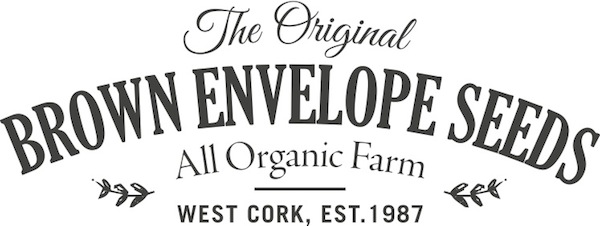
There are a number of advantages of growing onions from seed. The first is minimising the chances of bringing in a nasty disease. The second is having a larger choice of varieties and the third is cost. A packet of onion seed contains as many potential onions as 2kg of sets and is a lot cheaper. However they do need to be started earlier than sets, to produce large onions.
The seeds should be sown between now and the end of February and kept between 10-15°C (50-59°F) which is a bit warmer than outside. They can make use of propagator space before it is needed for tomatoes etc., or started on a sunny window sill. Sow four or five seeds per module in damp seed compost and grow each module as a clump. This is called multi-planting. Imagine each module growing on as a bunch and becoming a week's supply of onions. When planted out the clumps of bulbs will push themselves apart as they expand. There is a nice picture of multi-planted onions here http://tinyfarmblog.com/onions-from-seed/ Water module trays carefully, as onions don't like to be over-watered, and it may cause damping off, or death. They can be moved out of the propagator once they are up and growing, and at a time when it will be needed for other things. The seedlings can be hardened off in a greenhouse or cloche before planting outside in March of April. Onions like a sunny bed which is well drained and fertile but without too much nitrogen. If your soil is soggy you will not get good results and will need to add organic matter and grit to make it drain well, or raise the onions up on a ridge, or raised bed. When planted out, the modules can be 8" (20cm) apart which makes hoeing between them practical and hand weeding close to the plants is easier than if they are in rows, without enough space between them, for a hoe to pass. Onions do not compete well with weeds and will be easily swamped, resulting in small onions. High humidity in weedy onion patches also encourages diseases like powdery mildew. Some gardens have a really nasty onion disease called White Rot which causes a white fungal growth on the bottom of the onion. The spores live for years in the soil so if you have this disease you really can't grow onions.
Harvesting onions in clumps is easy, with one hand for each clump and about 50 clumps a 50lb crop can be harvested in a few minutes. This should be done as soon as the leaves begin to go yellow and the tops fall over. Then they need to be dried. Drying onions well is crucial to keeping well. Laying them out on a piece of plastic, one deep, in a greenhouse or polytunnel works. Making them into braids and hanging them up is even better, but is more time consuming. It can take several weeks for onions to dry properly. At this point a lot of their skins will fall off easily and they will be nice and shiny. Then they need to go in a cool but not damp place. I move them to our unheated 'back kitchen' where they can remain good until April or May.
To save your own onion seed select your best forty onions after harvest. Set them aside and only eat the ones that go soft. When you have twenty left, replant them in the ground in the greenhouse or tunnel about 1' (30cm) apart. This should be done in January or February. They will flower the following summer and produce seed ready to harvest in September. When it is ready to harvest the black seeds will start falling out of the flower heads. They can then be cut off and dried on a piece of plastic in the greenhouse. Tun the heads over every now and then to ensure they dry on all sides. Rubbing the heads will make the seed fall out when it is dry. Twenty onions will give you enough seed for all your friends and neighbours for several years. Onions will cross pollinate with other onions but not with leeks or anything else. The seed will keep for two or three years.
